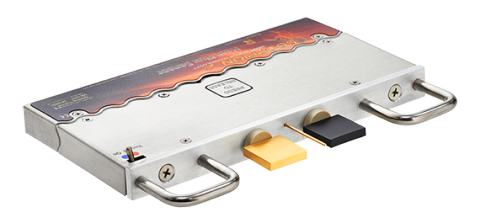Balancing heat and airflow across the width and length of bakery ovens is crucial for ensuring consistent baking results and high-quality products. Here’s why achieving this balance is so important in bakery operations and how Reading Thermal can help ensure it happens.
Uniform Baking
Proper heat and airflow distribution ensures uniform baking throughout the oven chamber, preventing hot spots and cold zones that can lead to unevenly baked products. Consistency in baking results in uniform texture, color, and flavor across all baked goods, enhancing their overall quality and appeal to customers.
Optimal Rise and Expansion
Balanced heat and airflow facilitate proper dough rise and expansion during baking, which is essential for achieving the desired volume, texture, and crumb structure in baked products like bread, pastries, and cakes. Adequate oven spring, the initial rise of dough in the oven, contributes to light, airy interiors, and desirable crust characteristics.
Control Over Moisture Levels
Heat and airflow management help regulate moisture levels within the oven chamber, which is essential for controlling crust formation and preventing surface drying or excessive moisture loss. Proper moisture retention promotes a crisp, golden-brown crust while maintaining a moist and tender crumb, enhancing the overall sensory experience of baked goods.
Consistent Product Quality
Balanced heat and airflow minimize variations in baking conditions, ensuring consistent product quality batch after batch. Whether baking small or large quantities of goods, maintaining uniform temperature and airflow across the oven surface and throughout the baking cycle is essential for reproducible results and meeting customer expectations.
Energy Efficiency
Efficient heat and airflow distribution optimize oven performance and energy utilization, reducing operating costs and environmental impact. Bakery operators can minimize energy waste and improve overall production efficiency by ensuring that heat is evenly distributed and utilized throughout the oven chamber.
Maintaining Balance
Achieving balanced heat and airflow across bakery ovens requires careful design, calibration, and maintenance. Here are some key considerations for achieving this balance:
- Oven Design: Bakery ovens should be designed with appropriate heating elements, fans, and airflow systems to facilitate even heat distribution across the width and length of the oven chamber. Proper insulation and sealing also help minimize heat loss and maintain consistent temperatures throughout baking.
- Airflow Management: Efficient airflow management is essential for distributing heat evenly within the oven chamber. Airflow systems, such as forced convection or steam injection, help circulate hot air uniformly around the baking products, ensuring consistent baking results and optimal product quality.
- Temperature Monitoring and Control: Bakery operators should regularly monitor and adjust oven temperatures to precisely control baking conditions. The Reading Thermal SCORPION® 2 Digital Air Velocity Sensor Array helps you do precisely that. It features sophisticated systems that provide operators with a clear picture of airflow patterns within the oven, from one end to the other and from side to side. Operators have the information they need to fine-tune baking parameters for different products and production requirements.
- Oven Loading and Placement: Proper loading and placement of baking trays or racks within the oven chamber are critical for ensuring uniform heat exposure and airflow around the products. Bakery operators should avoid overcrowding the oven and ensure adequate spacing between trays to promote optimal heat transfer and circulation.
As you can see, balancing heat and airflow across the width and length of bakery ovens is essential for achieving consistent baking results, optimal product quality, and energy efficiency. Contact us online or call 610-678-5890 to find out how our Reading Thermal SCORPION® 2 Digital Air Velocity Sensor Array can help you achieve that goal.

